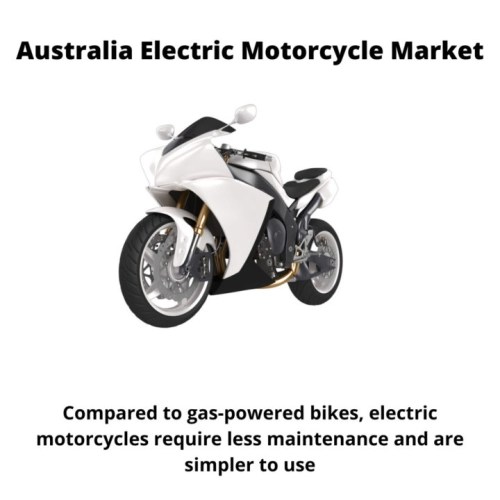
- Get in Touch with Us

Last Updated: Apr 25, 2025 | Study Period: 2024-2030
Built with sturdy metal and fibre frames and a combination of mechanical and electrical components, electric motorcycles are also known as electric motorbikes or e-bikes. They are extensively used in a variety of contexts, including daily travel, competition, off-road use, and others.

Energy may be produced considerably more easily and cleanly by using electricity. There is no additional trash, no burning process is needed, and the components don't degrade very quickly. Compared to gas-powered bikes, electric motorcycles require less maintenance and are simpler to use.
Since range and recharging durations are practically eliminated by swappable batteries, progress may now be made, at least for smaller commuter models aimed at densely populated metropolitan areas. As a result, manufacturers have been waiting to make the electric move.
The Australia Electric Motorcycle Market accounted for $XX Billion in 2023 and is anticipated to reach $XX Billion by 2030, registering a CAGR of XX% from 2024 to 2030.
Australia's first electric motorcycle, which will start manufacturing in Melbourne, was created by an ex-Ford engineer.
The motorcycles feature outstanding charging and speed capabilities, as well as the torque of a compact European hatchback. The 16 kWh lithium-ion battery within the C-Series can reach 80% of its capacity in about four hours and has a 150â250 km (for the Omega) city range (for the Alpha).
The Alpha's 200 Nm of torque enables it to accelerate from a standstill to 100 kph in 3.5 seconds. The belt-driving motor is almost completely concealed and blends into the single-sided swingarm, leaving the enormous lithium battery on display and protected by cooling fins.
| Sl no | Topic |
| 1 | Market Segmentation |
| 2 | Scope of the report |
| 3 | Abbreviations |
| 4 | Research Methodology |
| 5 | Executive Summary |
| 6 | Introduction |
| 7 | Insights from Industry stakeholders |
| 8 | Cost breakdown of Product by sub-components and average profit margin |
| 9 | Disruptive innovation in the Industry |
| 10 | Technology trends in the Industry |
| 11 | Consumer trends in the industry |
| 12 | Recent Production Milestones |
| 13 | Component Manufacturing in US, EU and China |
| 14 | COVID-19 impact on overall market |
| 15 | COVID-19 impact on Production of components |
| 16 | COVID-19 impact on Point of sale |
| 17 | Market Segmentation, Dynamics and Forecast by Geography, 2024-2030 |
| 18 | Market Segmentation, Dynamics and Forecast by Product Type, 2024-2030 |
| 19 | Market Segmentation, Dynamics and Forecast by Application, 2024-2030 |
| 20 | Market Segmentation, Dynamics and Forecast by End use, 2024-2030 |
| 21 | Product installation rate by OEM, 2023 |
| 22 | Incline/Decline in Average B-2-B selling price in past 5 years |
| 23 | Competition from substitute products |
| 24 | Gross margin and average profitability of suppliers |
| 25 | New product development in past 12 months |
| 26 | M&A in past 12 months |
| 27 | Growth strategy of leading players |
| 28 | Market share of vendors, 2023 |
| 29 | Company Profiles |
| 30 | Unmet needs and opportunity for new suppliers |
| 31 | Conclusion |
| 32 | Appendix |